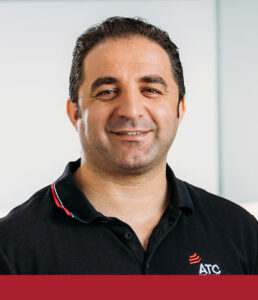Understanding seismic waves
Ground Motion Prediction Equations (GMPEs) are crucial in Deterministic and Probabilistic Seismic Hazard Analyses (DSHA and PSHA). These equations are used to predict the intensity of ground shaking after an earthquake, particularly the interplay between magnitude and source-site distance. In deterministic assessments, GMPEs model specific scenarios, while in probabilistic assessments, they estimate the probability of ground motion intensities over time.
A foundational aspect of any GMPE lies in comprehending the attenuation behaviour of ground shaking resulting from an earthquake. This intricate interaction encompasses factors such as rupture propagation, direction and energy release, and the characteristics of the materials through which seismic waves propagate.
Which models work best for Australian earthquakes?
The empirical modelling of GMPE requires a substantial supply of strong-motion data to account for earthquake scenarios relevant to engineering interests. This conventional modelling approach is feasible primarily in tectonically active areas equipped with a sufficiently dense strong-motion recording network over many years. The traditional approach may not be applicable in stable areas with low-to-moderate seismic activity, like Australia. In such instances, stochastic methods will simulate ground motions for larger earthquakes in regions where real-event recordings are unavailable.
Continuous refinement of GMPEs is indispensable for accuracy, incorporating advancements in seismological research and comprehensive earthquake data, thereby offering precise and reliable seismic hazard analyses. GMPEs for Australian earthquakes exist using both available and simulated data, acknowledging inherent limitations.
While these models hold considerable importance, they may have limitations in accurately representing the attenuation of larger earthquake magnitudes. This is attributed to the inadequacy of strong-motion data gathered from large earthquakes during their development. As a result, it is recommended that global GMPEs are developed to obtain a comprehensive perspective.
Utilising the best methodology
In the context of a global surge in GMPE proliferation, driven by advancements in international and regional seismic networks, the challenge of identifying the best GMPE model has grown notably intricate. Factors like tectonic region type, magnitude specifications, spectral period range, and site effect calibration play crucial roles in this decision-making process. The complexity of model selection emphasises the need to thoroughly evaluate globally developed GMPEs. Such an assessment is vital for cultivating a deeper understanding and improving the applicability of these models across various seismotectonic settings.
Integrating global and locally developed GMPEs into a logic tree effectively addresses epistemic uncertainties, enabling a comprehensive evaluation of various sources of uncertainty. The recommendation is to assign higher weights to local GMPEs, acknowledging their relevance and reliability in the specific geographical context. When considering a range of GMPEs with appropriate weightings, this systematic and inclusive methodology enhances our understanding of potential risks and seismic hazards for the study area.
The graph below compares the Uniform Hazard Spectrum (UHS) using various GMPEs for an eastern Victoria site for a 10,000-year return period. The dashed line represents the mean calculated from assigned weightings for each GMPE.
*The dashed line represents the calculated mean, determined based on assigned weights for each GMPE.
Putting theory into practice – Meet our team
Dr. Hiwa Mohammadi
Senior Seismologist and Engineering Geologist
Dr. Sarah Moein
Associate Seismologist and Geologist
The seismology team at ATC Williams integrates global GMPEs with those tailored for the Australian context to manage uncertainty effectively. Employing a weighted approach known as a logic tree, we prioritise GMPEs developed for Australia by assigning them greater weight, acknowledging their specialised relevance to local conditions. This approach ensures comprehensive seismic assessments considering global standards and regional intricacies.
Using the latest earthquake catalogue, our collaborative team, led by Dr. Hiwa Mohammadi (Senior Seismologist and Geologist) and Dr. Sarah Moein (Associate Seismologist and Geologist), also includes respected seismologists recognised for their expertise.
- Senior Seismologist Gary Gibson, esteemed for his substantial contributions to the field at the Seismological Research Centre, enhances our team with his wealth of experience.
- Mark Leonard, formerly in a leadership role at Geoscience Australia as a lead seismologist, brings invaluable insights garnered from extensive research and analysis.
Dr. Hiwa Mohammadi and Dr. Sarah Moein possess deep experience in leading seismic hazard projects, both locally and internationally. Their knowledge and analytical skills offer critical perspectives and innovative approaches to addressing complex seismic challenges. Through the synergy of collective experience and diverse expertise, our team conducts comprehensive analyses, furthering our comprehension of seismic hazards.
– By Dr Hiwa Mohammadi
Hiwa is a senior seismologist and engineering geologist with expertise in site characterisation and planning for tailings dams with significant emphasis on site-specific seismic hazard analyses in Australia and overseas. He holds a Master’s in Tectonics and a PhD in geological/geophysical engineering.
– Connect with Hiwa on Linkedin
– Connect with Sarah on Linkedin
RELATED ARTICLES:
Introducing Seismologists, Sarah Moein and Gary Gibson
Appropriate Earthquake Loads for Design of Embankment Dams
RELATED PROJECTS:
BHP Mount Arthur Coal



